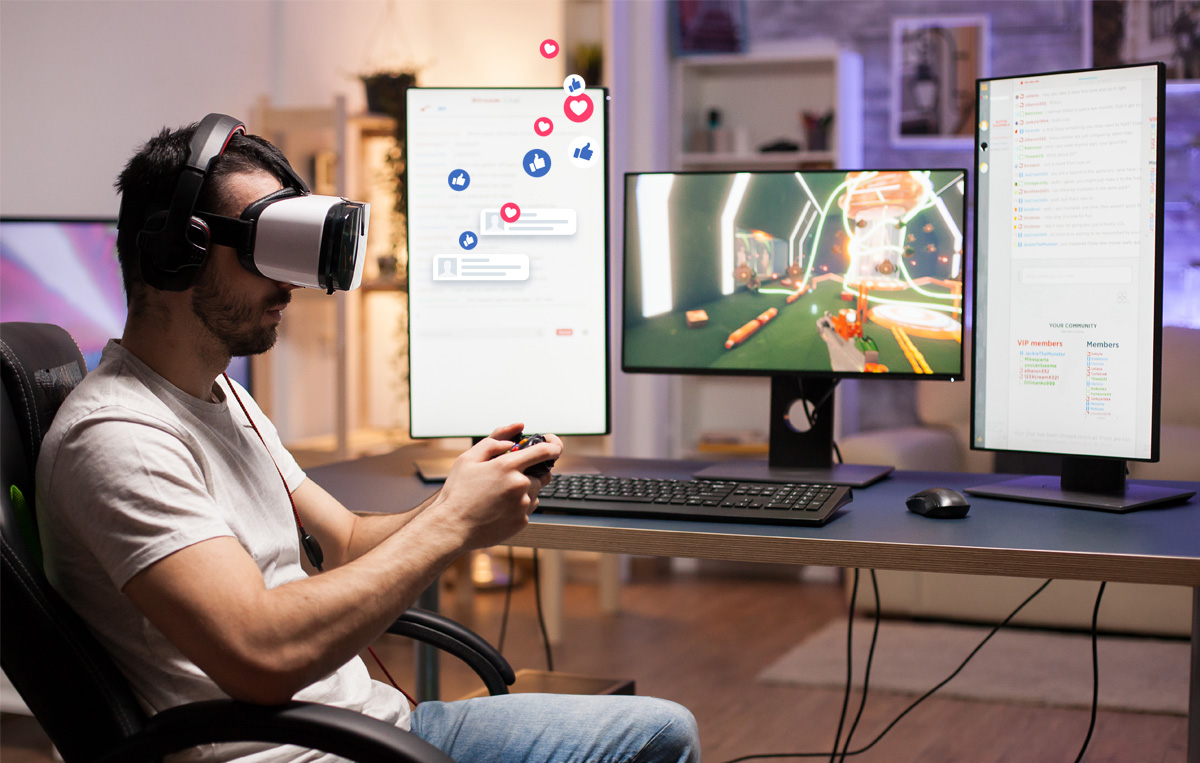
Where Online Conversations Shape Player Behavior
Gaming has always been about interaction—whether with virtual worlds or real players. But now, the conversation stretches beyond the game itself. Platforms like Twitter, TikTok, Twitch, and Reddit influence how games are played, shared, and even developed. Social media trends can change a title’s popularity overnight or redefine what players expect from a game.
A meme, clip, or hashtag can push a niche title into the spotlight. Developers are watching closely. The feedback loop between players and creators has never been tighter. A trend may spark new content, game patches, or entire design changes. What happens online quickly ripples into the game world.
Players no longer wait for official updates. They create and shape culture themselves. Social media gives everyone a voice, and that voice can be loud enough to shift the direction of entire franchises.
Viral Moments That Launch Games Into the Spotlight
Games don’t need traditional advertising to find an audience anymore. One unexpected video, moment, or quote can spark interest that spreads faster than any marketing plan. Think of titles like Among Us or Fall Guys—both exploded in popularity long after their original launch dates, thanks to viral clips and reactions.
A funny glitch, a wild in-game play, or a relatable quote might turn into a meme. Suddenly, everyone wants to play just to be part of the trend. These moments give older or under-the-radar games new life and often inspire spin-offs, merchandise, and fan art.
Even developers are leaning into it. Many now release beta versions, invite streamers, and monitor which moments catch fire online. They know a single meme might be worth more than a billboard ad.
Streamers as Modern Game Hosts
Streaming platforms like Twitch and YouTube Gaming have given rise to personalities who act like the new generation of talk show hosts—only with gameplay as their stage. These creators don’t just play games; they influence what others play too. Their preferences shape buying decisions, while their style sets community tone.
A streamer discovering a new game can bring tens of thousands of eyes to it in minutes. Their reactions—genuine, funny, or critical—carry weight. Viewers trust their opinion more than a polished trailer or a critic’s score.
Developers often provide early access codes or co-create content with streamers. It’s a partnership that blends entertainment and marketing naturally. A well-timed stream during a launch week can mean the difference between a quiet debut and a viral surge.
Community-Driven Content and Game Updates
Social media makes it easy for players to give feedback—and for studios to respond quickly. What starts as a fan request in a Reddit thread might turn into an official patch. Many games now publish development roadmaps publicly, guided by community conversations.
Some studios even bring fans into the process, letting them vote on features or submit ideas. Fortnite is a leading example—its fast-changing map, rotating skins, and live events are all deeply shaped by social buzz and fan excitement.
This two-way communication helps games stay fresh. Players feel heard, and developers get real-time insight into what’s working. It turns content updates into shared milestones rather than corporate decisions.
Short-Form Video Is Reshaping Discovery
TikTok and Instagram Reels have changed how games are discovered. Bite-sized, attention-grabbing content gives users a taste of gameplay in seconds. One short clip of a satisfying combo, clever strategy, or hilarious fail can reach millions without a single ad dollar spent.
This kind of content is ideal for games that are easy to understand at a glance. Casual and mobile games often benefit most, but even complex titles can get traction when shown with creativity and context.
Creators now think in vertical video. They optimize their content to fit phone screens, add text overlays, and use trending music. This adaptation doesn’t just promote games—it helps shape how they’re played and perceived.
Memes That Influence Game Identity
Every gamer has seen a title redefined by a meme. Whether it’s Skyrim’s “arrow to the knee” or Elden Ring’s endless “Try finger but hole” messages, humor spreads fast—and sticks. These memes often become part of the game’s public identity, influencing how it’s remembered and discussed.
Players participate in shaping the vibe of a game through humor. Inside jokes, references, and community slang build a kind of shared language. Sometimes developers join in too, nodding to memes with easter eggs or updates that reflect fan culture.
Memes aren’t just jokes—they’re community currency. They make a game feel alive, even between updates. When players share content with laughter or pride, it builds deeper bonds that extend far beyond a login screen.
Hashtag Campaigns Fueling Fan Engagement
Hashtags make it easy to find and join conversations about games. A well-timed #FanArtFriday or #GameClipOfTheWeek can keep audiences engaged long after launch. These campaigns aren’t just trends—they’re tools for building community around shared creativity.
Studios often run contests tied to hashtags, encouraging players to post their art, videos, or stories. This doesn’t just boost visibility—it makes players feel like part of the game’s world. When fans see their work shared by developers, it builds loyalty and excitement.
Hashtags also help new players find trusted content. Whether searching for tips, watching highlights, or comparing reviews, hashtags organize the noise into something useful and social.
Collaborations and Crossovers Driven by Fan Buzz
Sometimes, players start imagining what a crossover between two games might look like. And if enough people talk about it, it can actually happen. Social media buzz has led to unexpected collabs—like Street Fighter characters in Fortnite or Sonic costumes in Fall Guys.
These crossovers aren’t random. They’re responses to what’s trending. Developers watch conversations closely and look for moments where fan enthusiasm could translate into a successful event or promotion.
When done right, these partnerships feel exciting and natural. Fans get a surprise they helped shape, and both games benefit from renewed attention. It’s a win that starts with tweets, memes, or shared hype—and ends in in-game reality.
Game Launches That Lean Into Social Platforms
More and more game releases are planned with social media in mind. Trailers drop first on YouTube or Twitter. Sneak peeks show up in Instagram stories. Beta signups spread through Discord. Every step is built around creating buzz, not just waiting for reviews.
Some games even design launch events specifically for streamers or influencers. These moments are carefully crafted to go viral: dramatic moments, cliffhangers, or player rewards that create shareable stories.
The goal isn’t just to sell the game—it’s to spark conversation. If players are talking, posting, and creating around the game, it stays relevant. That chatter is often more powerful than any headline or critic’s quote.
A Connected Future for Gaming and Social Media
Gaming and social media no longer run on separate tracks. They feed each other in real time. Players shape content, studios respond, and trends grow through shared moments. Whether it’s a meme, a clip, or a comment thread, these interactions influence how games are made, played, and remembered.
This blend of creativity, conversation, and connection is what drives today’s gaming culture forward. It’s a space built by communities—and one that keeps evolving with every post, like, and share.







